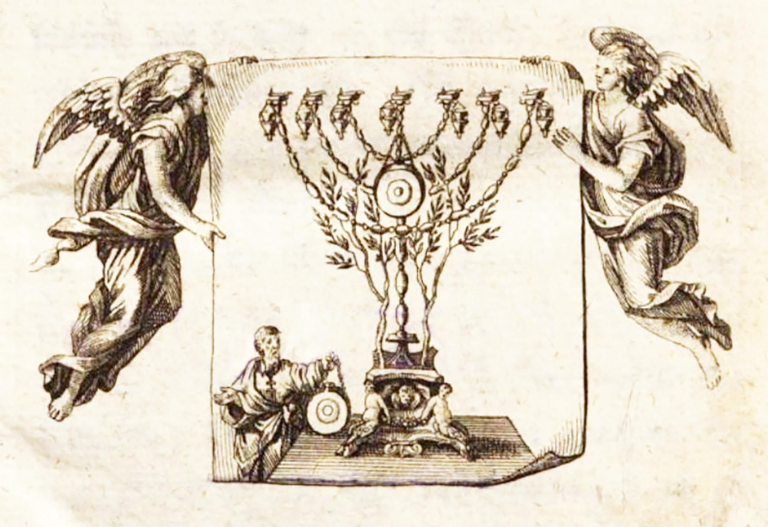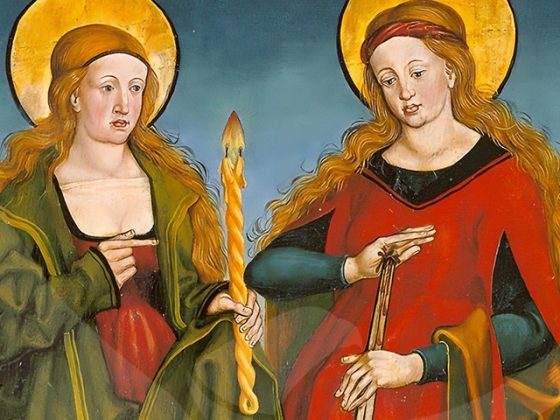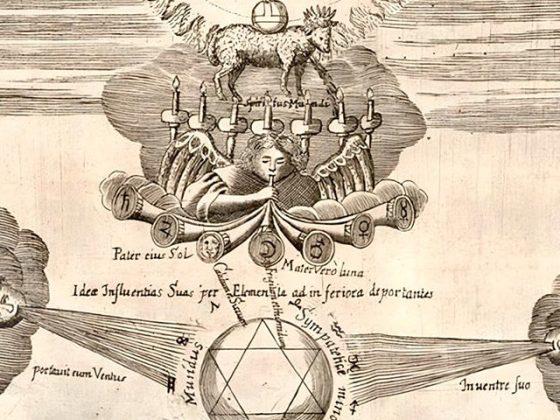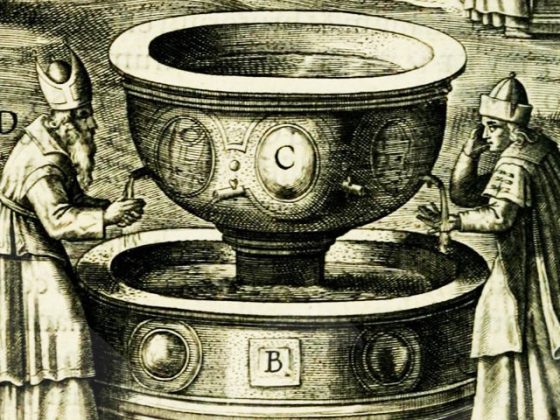Beloved friends:
With great pleasure I send you the description of this other beautiful engraving that bears the title…
…THE SECRET CANDELABRUM
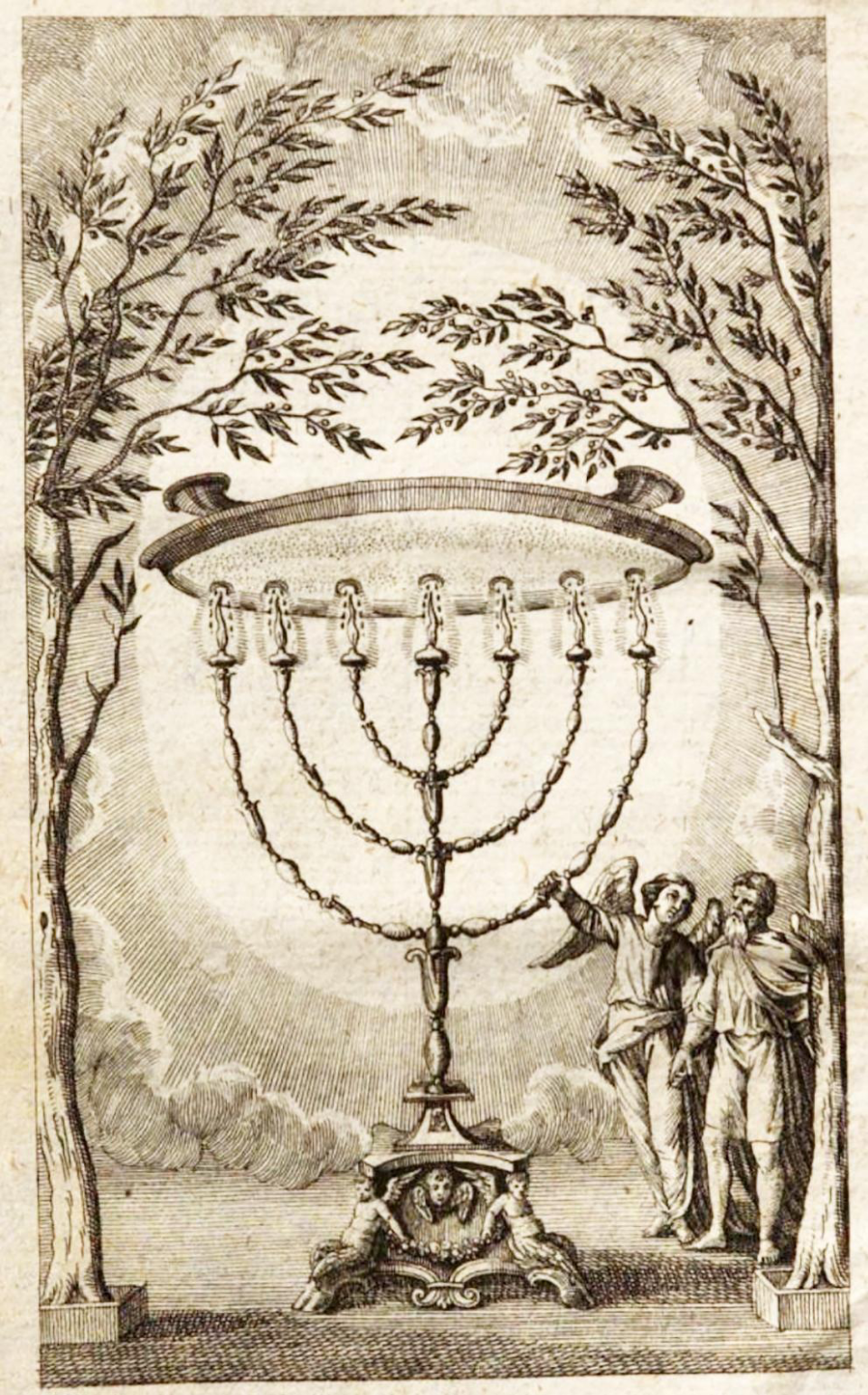
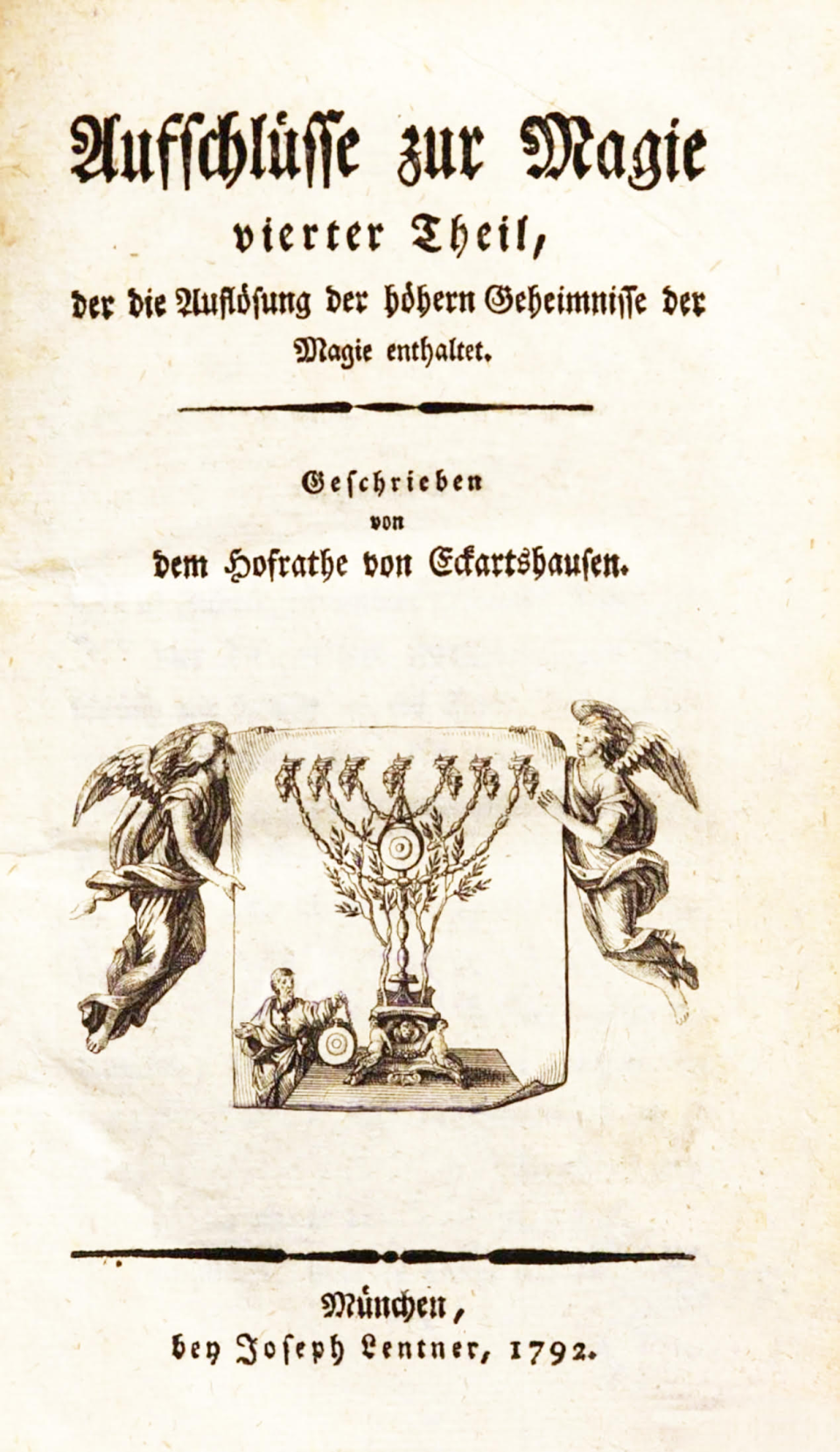
First of all, it is necessary that you know that this engraving is part of the same book that was called Perspective on magic, written by Karl Von Eckartshausen, who lived between 1752 and 1803. The volume containing this engraving was first published in 1792.
The engraving is shown twice because some interesting variants have been placed in it. In the first one we observe a huge candelabrum shown to the Adept by an angel who is instructing him. Such a candelabrum is flanked by two enormous olive branches, and this reminds us of the two witnesses who are, according to the Holy Scriptures, before the throne of Jehovah and vomit boiling oil. Those olive branches refer to the Ida and Pingala canals that run on both sides of our spine leading, precisely, our Sulfurized Mercury to our brain and, in general, to our secret anatomy.
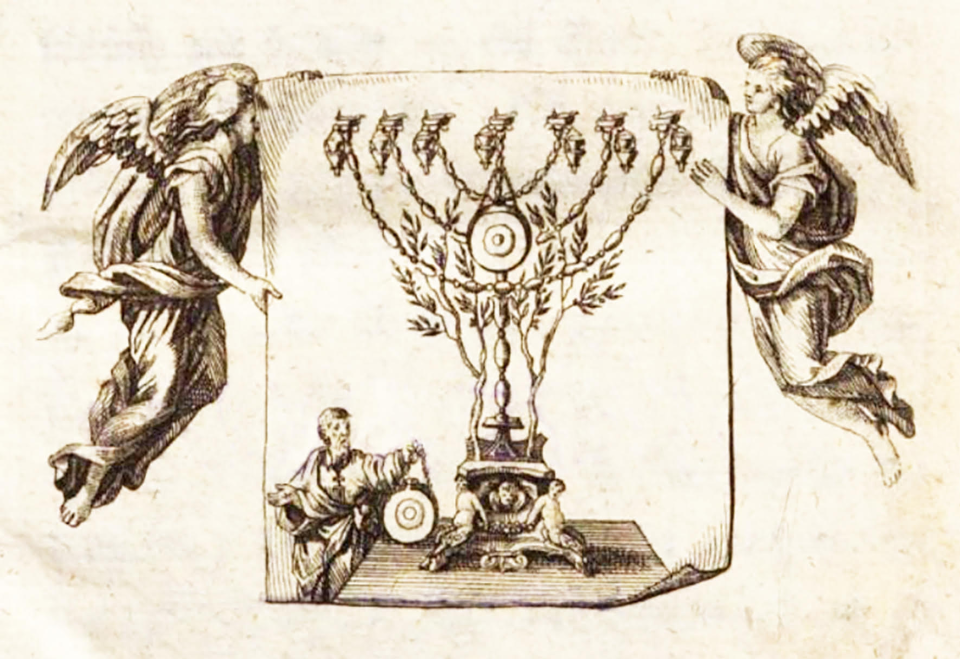
Gnostically speaking, we know that the candelabrum symbolizes our spine with its different nadis or canals that allow it to lead our mercurial tincture to where we have already indicated previously.
The candelabrum has all seven fires lit and the guiding angel is instructing the Adept on the advancement of his work in the transmutatory art. These fires are the product of the incessant work that our Divine Mother ─Stella Maris─ carrries out on us when we work in the laboratorium oratorium of our material body or physical body. Such an operation will have to be repeated in the other atomic vehicles of our hidden physiognomy.
The candelabrum is placed upon four little angels –only two of them are visible because the other two are at the back of it–. These four little angels represent the four elements basically necessary to carry out the INNER GREAT WORK ─namely: water, fire, air and earth─.
It is very regrettable that the Hebrew religion, in our day, does not know these mysteries that are part of the tradition of the Old Testament. This is due to the blindness of their guides, as is also the case with the blind guides of the blind of other religions of our world. The Bible was written in code to be understood by those who know the secret language of metaphysical symbology.
At the top of the candelabrum there is a kind of two small short tubes that allegorize the synthesis of the two canals to which we referred before with the Sanskrit names Ida and Pingala.
In the second engraving, two angels once more show a panel in which we are shown the candelabrum, having upon its arms some lamps from which some unlit wicks protrude. In that same image we are now shown at the center of the candelabrum, again, the two olive branches, and between them a circular container of water. This circular vessel is none other than the feminine yoni, for the inner work is the work of two persons: the man and the woman. For this same reason, so that we understand it well, an old man who serves as a master instructor once again exhibits that circular container.
The task ahead of us consists, certainly, in lighting our candelabrum, as Gnosis so well tells us, so that we can enter the kingdom of light. Cold, lunar people, unaware of these indications, will always remain in philosophical speculations or locked within the petrified dogmas of failed religions. It is here that we must resolve our dilemma that speaks to us of “TO BE or NOT TO BE, that is the question”, as the famous Shakespeare so well emphasized…
I send you some sentences that deserve to be reflected upon:
“There is no doubt that true devotion is the source of tranquility.”
La Bruyère
“Heaven always favors the just request.”
Cervantes
“The greatest piety is the most secret.”
Sterne
BARBAM AND PALLIUM, PHILOSOPHUM NONDUM VIDEO.
─‘I see a beard and a cloak, but I do not yet see a philosopher’─.
KWEN KHAN KHU


